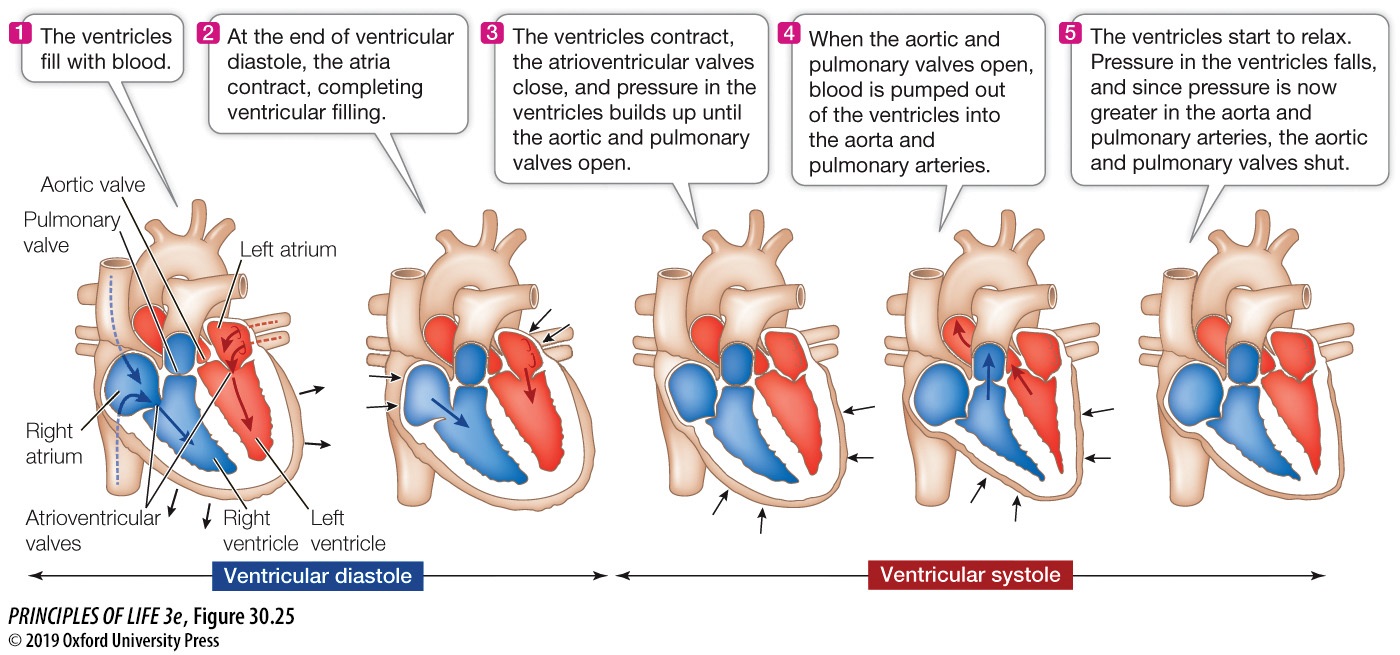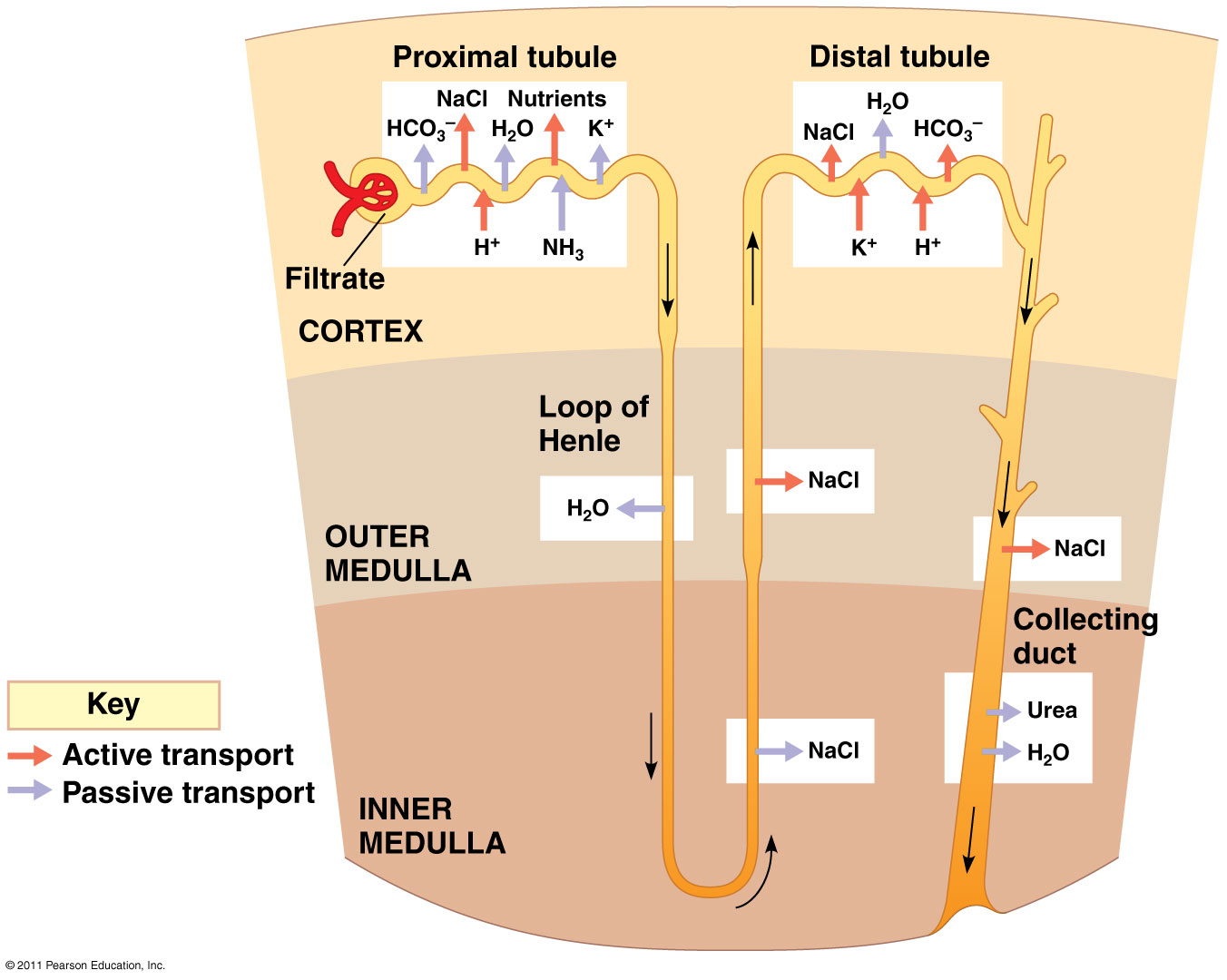Respiration

Different kinds of respiratory organs in different animals
Lungs:

Human respiratory system


|
1. Air is breathed into the lungs. 2. Oxygen diffuses from alveolar air into the blood and combines with hemoglobin in the red blood cells. 3. Bloodstream carries hemoglobin all over the body. 4. When blood reaches a muscle that is active and thus using oxygen, the oxygen is released (dotted pink arrow) into the muscle. |

Air sacs in birds act like bellows to pump air through the relatively inflexible lungs with each wing-beat.
Gills:

Gill systems in fishes, featuring counter-current flow of water and blood for maximum efficiency of dissolved gas exchange.
"Afferent" means flowing or carrying towards something (the gills in this case);
"Efferent" means flowing or carrying out of or away from.

Counter-current flow (in opposite directions) makes for more efficient
gas exchange than co-current flow in the same direction.

The swim bladder in fishes is a modified lung that now serves as a hydrostatic organ to control buoyancy and depth.
Insect tracheal systems:

Insect tracheal systems branch to reach every cell in the body.


Circulatory systems


Notice that the smooth muscle fibers around the arterioles (including the precapillary sphincters)
control the blood flow to and through the capillary bed.

The circulatory pattern in mammals. Blood flow on the right side
never mixes with blood flow on the left side.


The "cardiac cycle" of heart action.
Osmotic pressure (tonicity) and Excretion


Freshwater animals live in hypotonic (hyposmotic) surroundings and need adaptations to get rid of excess water.
Salt-water animals live in hypertonic (hyperosmotic) environments and need to get rid of salt while retaining water.
Excretory system



